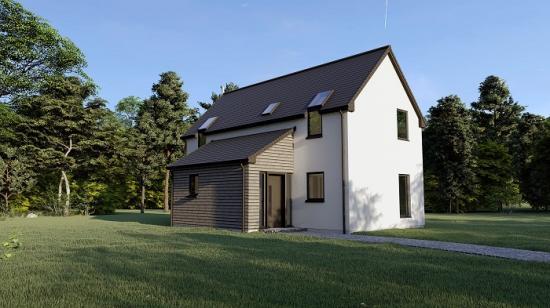How To Finance Your Self-build New Home
5th September 2019

If you need to raise finance for your project it is usual to seek a ‘self-build mortgage'.
Mortgages for self-build houses are a specialist product and many lenders do not offer them. However, the self-build mortgage market has expanded considerably in recent years and so long as your project is correctly planned and presented, you should have little difficulty in obtaining a mortgage.
The major difference between a self-build mortgage and a traditional mortgage is that with the self-build version you will receive your mortgage funds in several stages, as your house build progresses, rather than a single lump sum, when buying an existing house. Within this overall structure there are a number of variations.
A self-build mortgage may cover the purchase of the building plot (depending on the lender). For the build itself, the mortgage will be paid to you in 4-6 instalments upon completion of agreed stages of the build (e.g. completion of the foundations).
The amount you can borrow for your self-build will vary from lender to lender. Some will only allow you to borrow for the build itself, others will offer a mortgage on both the land and the build. At the time of writing (2019) it is possible to borrow up to 95% of the value of the land and 90% of the value of the completed house from some lenders. But, many will not lend more than 75-80%. If you borrow a high percentage, it is likely you will have to pay a higher interest rate.
If you have difficulty raising the amount required as a self-build mortgage but the lender will grant you a higher percentage on completion the Self-Build Loan Fund may offer a viable solution.
Not everyone wants, or needs a mortgage. You may be able to fund your build in other, cheaper ways. For example, if you already own a house with substantial equity, it may be cheaper to re-mortgage your house with a larger loan and use this to fund your self-build. A re-mortgage on an existing property should always work out cheaper than a self-build mortgage. You may also wish to consider selling your existing property and moving into rented accommodation or a caravan on site.
You'll find information on suitable sources for self-build mortgage facilities on the Thermohaus website.
NB While you are actually constructing your house, you will probably need insurance in order to protect yourself and to meet the requirements of your mortgage lender. In particular, you are looking for insurance to protect yourself against the following claims (if applicable:
>Contractor and third party claims
To protect yourself against claims for injury or death of people working on your site or any other third party.
>Employer's liability insurance
To protect yourself against any claims in your role as a building employer.
>Site and Materials
To protect yourself against loss, theft or damage of building materials and your partially completed house.
>Equipment
To protect yourself against loss, theft or damage to equipment on site.
Most self-builders take out an 'All Risks' policy with a specialist broker. There are a handful of specialist self-build insurance providers and you will find their details HERE
See other articles in the advice series from Thermohaus.
Planning Advice and Building Warrant
House Design Advice From Thermohaus
Finding And Buying Land For Your Self Build Home
Building Your Own Home Is Easier Than You May Think
Can You Afford To Build Your Own Home
How to Finance Your Self-build New home]
Related Businesses
Related Articles
